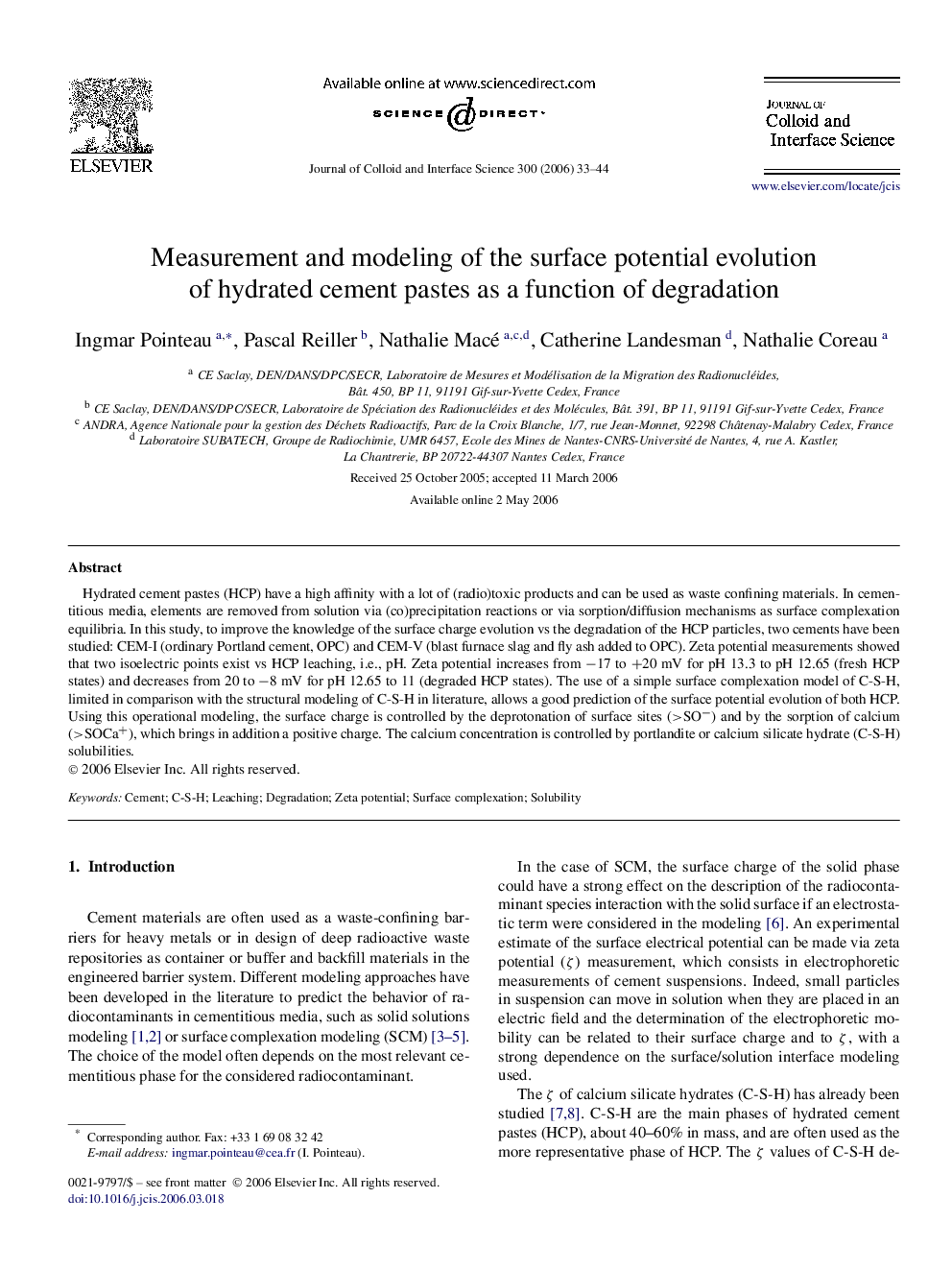| کد مقاله | کد نشریه | سال انتشار | مقاله انگلیسی | نسخه تمام متن |
|---|---|---|---|---|
| 613542 | 880724 | 2006 | 12 صفحه PDF | دانلود رایگان |

Hydrated cement pastes (HCP) have a high affinity with a lot of (radio)toxic products and can be used as waste confining materials. In cementitious media, elements are removed from solution via (co)precipitation reactions or via sorption/diffusion mechanisms as surface complexation equilibria. In this study, to improve the knowledge of the surface charge evolution vs the degradation of the HCP particles, two cements have been studied: CEM-I (ordinary Portland cement, OPC) and CEM-V (blast furnace slag and fly ash added to OPC). Zeta potential measurements showed that two isoelectric points exist vs HCP leaching, i.e., pH. Zeta potential increases from −17 to +20 mV for pH 13.3 to pH 12.65 (fresh HCP states) and decreases from 20 to −8 mV for pH 12.65 to 11 (degraded HCP states). The use of a simple surface complexation model of C-S-H, limited in comparison with the structural modeling of C-S-H in literature, allows a good prediction of the surface potential evolution of both HCP. Using this operational modeling, the surface charge is controlled by the deprotonation of surface sites (>SO−) and by the sorption of calcium (>SOCa+), which brings in addition a positive charge. The calcium concentration is controlled by portlandite or calcium silicate hydrate (C-S-H) solubilities.
Figure optionsDownload as PowerPoint slide
Journal: Journal of Colloid and Interface Science - Volume 300, Issue 1, 1 August 2006, Pages 33–44